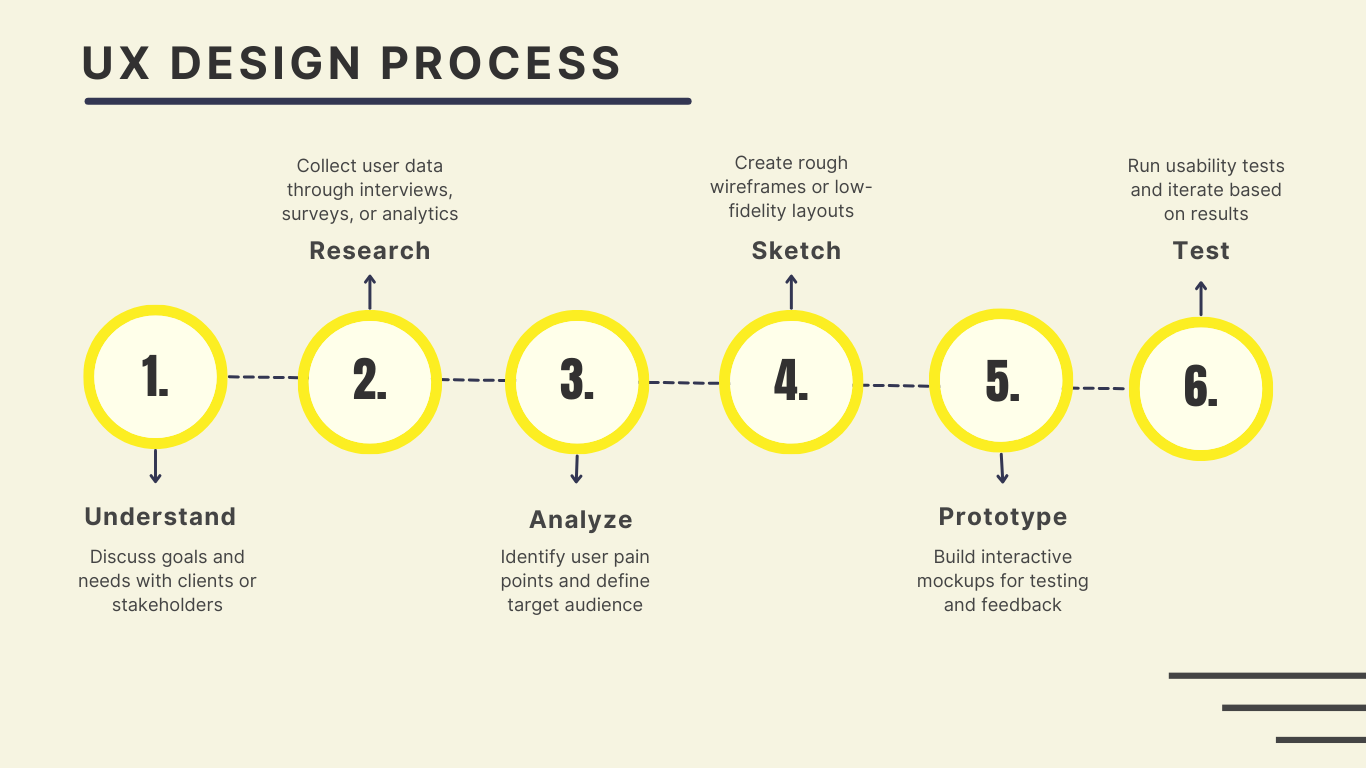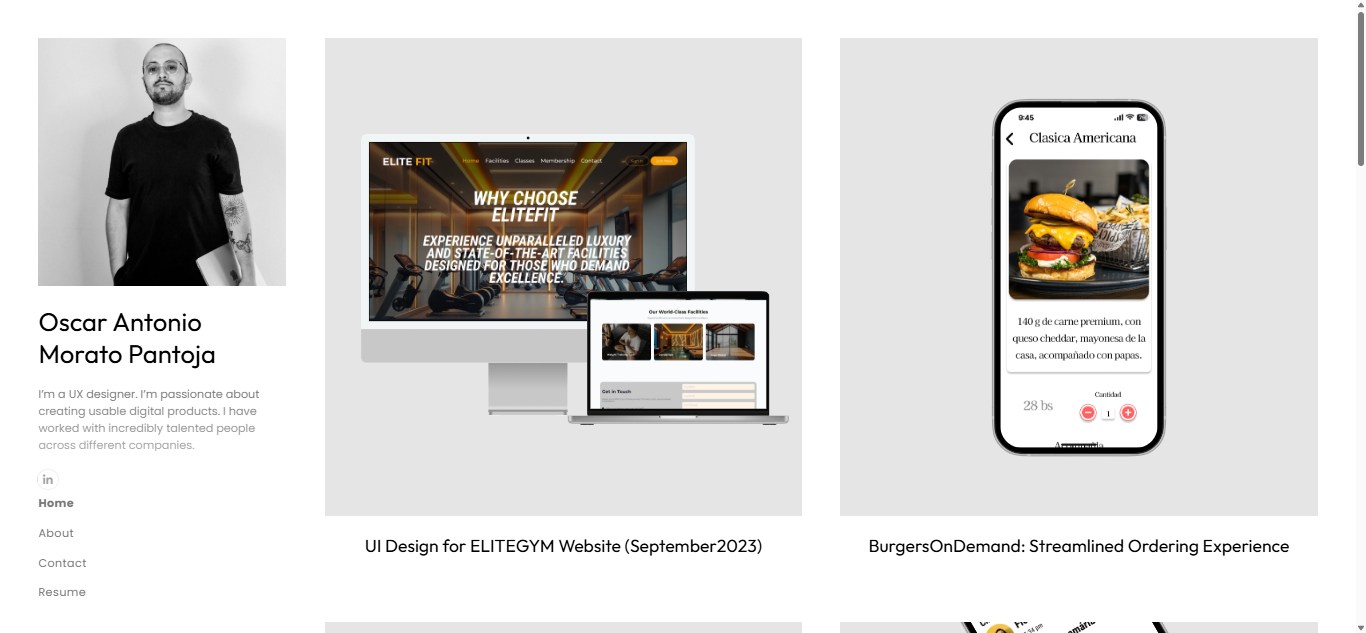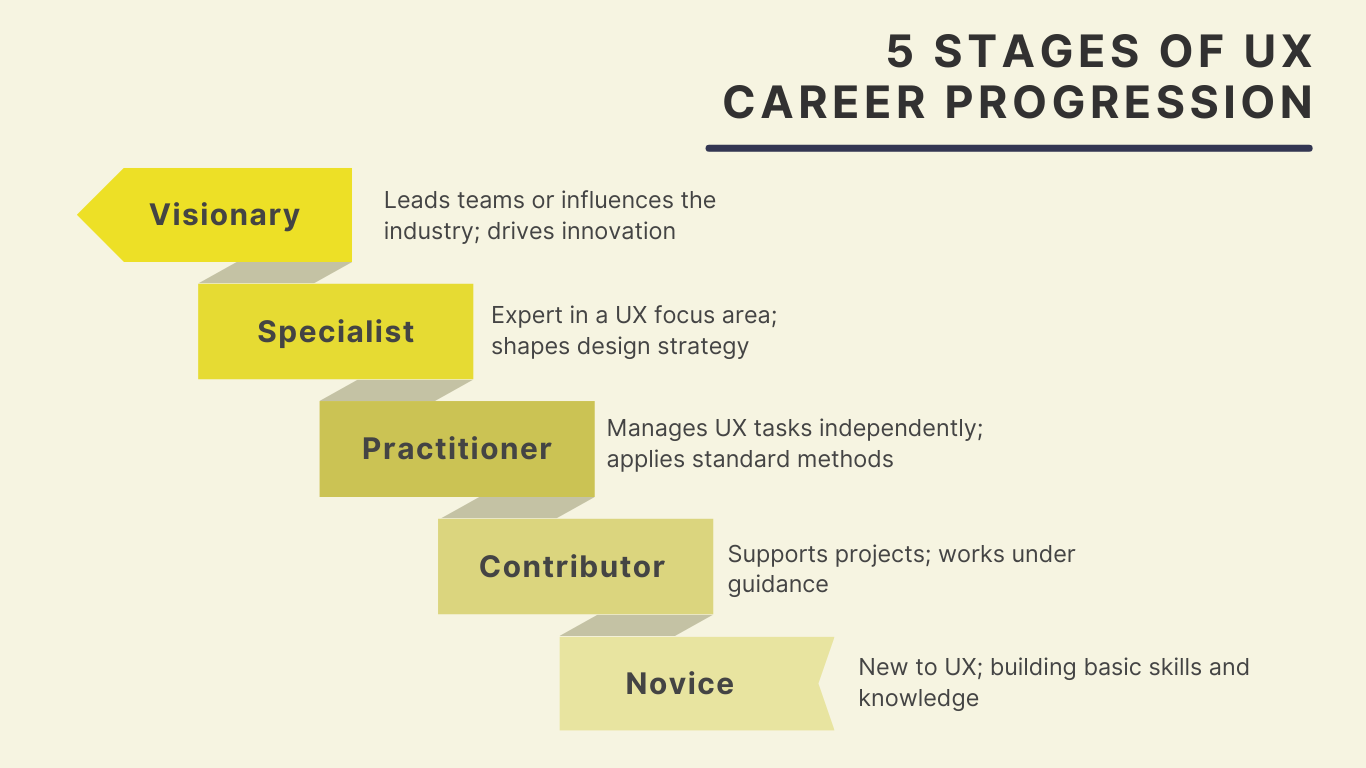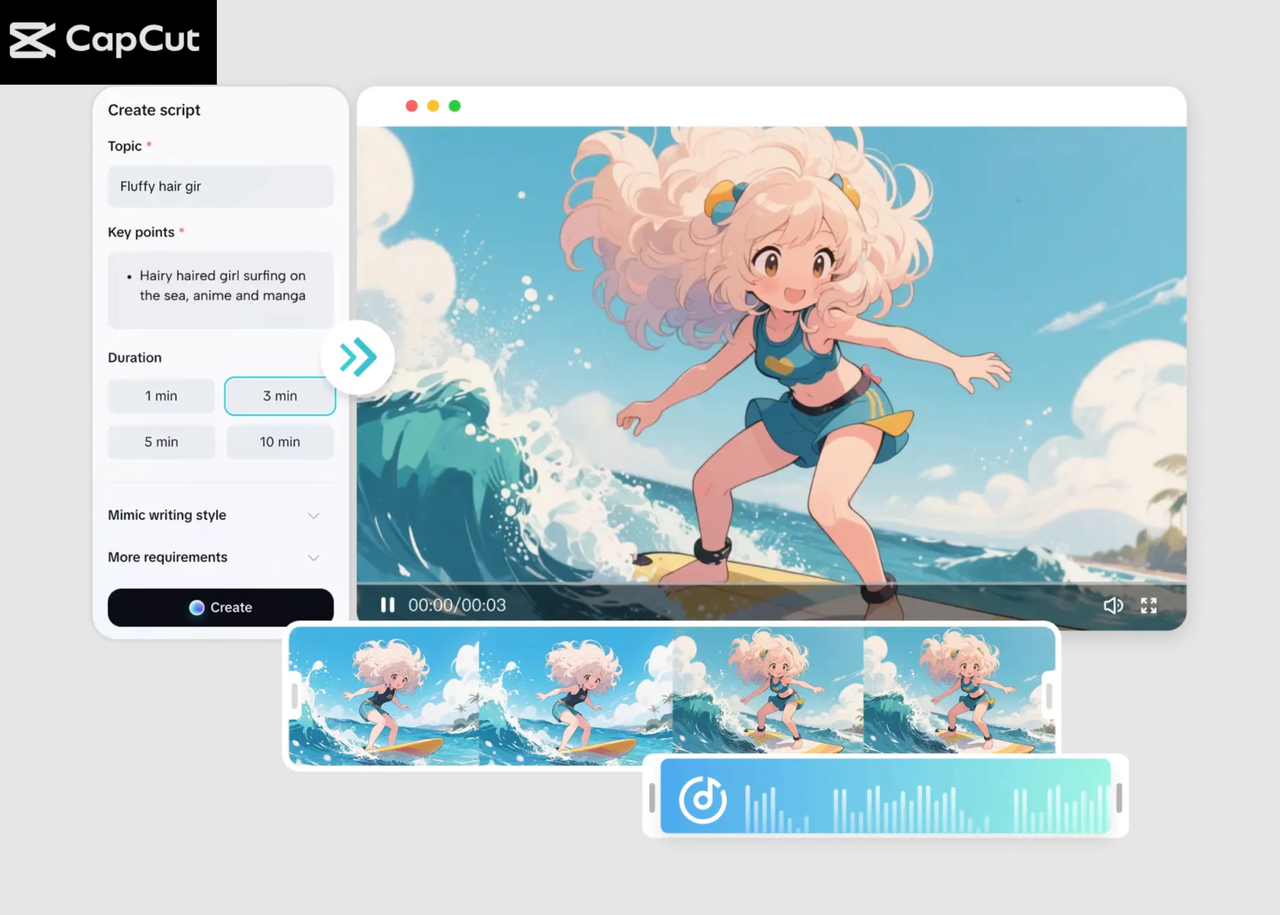In today’s digital era, creating user-friendly products is essential, making UX roles highly sought after by companies. If you’re switching careers or have no prior background in design, learning how to become a UX designer can feel challenging. But don’t worry, this guide will help you understand UX and determine if this career is right for you.
Key Takeaway:
- UX designers are responsible for making digital products, like websites or software intuitively, seamlessly, and user-friendly.
- There are multiple paths to becoming a UX designer, including formal degrees, online courses, and bootcamps. Each option offers unique benefits and requires varying time commitments.
- While the field may seem competitive, UX design remains in high demand, especially in sectors like tech, healthcare, and finance.
What is a UX Designer?
A UX designer focuses on creating products (mostly digital tools like websites or apps) that are easy to use and valuable to users. They typically work as a team, collaborating with developers, UI designers, and stakeholders to deliver better user experiences.
Also Read: UX Audit Explained: What It Is and How to Do It
How to Become a UX Designer: A Step-by-Step Guide
If you’re serious about becoming a UX designer, there are challenges ahead, but with the right guidance, you can succeed. Follow these steps to shape your path.
Step 1: Learn the Essential Skills and UX Process
Before committing, it’s important to understand what UX designers do and the skills required. This helps you decide where to focus your learning.
a. Develop the Core Skills
A UX designer needs both technical and soft skills:
Technical skills:
- User research and analysis;
- Visual and UI design;
- UX writing;
- Agile methods;
- Prototyping, wireframing, and mockups;
- Usability testing;
- Basic coding (optional, but helpful).
Soft skill:
- Communication,
- Collaboration,
- Empathy,
- Critical thinking,
- Time management.
b. Understand the UX Design Process
 UX design process | source: canva.com
UX design process | source: canva.com
If you’re practicing how to become a UX designer, understanding the workflow is essential. UX designers are involved in stages from planning to testing. The general process includes:
- Understand: Define client goals and user needs.
- Research: Collect user data to identify problems.
- Analyze: Define user personas and key insights.
- Sketch: Create early wireframes or concepts.
- Prototype: Build high-fidelity wireframes or mockups.
- Test: Conduct usability testing and iterate.
Also Read: 10 Inspiring SaaS UI/UX Projects That Nailed User Experience
Step 2: Choose Your Learning Path
Finding the best way to become a UX designer depends on your background, time, and goals.
a. Pursue a Formal Degree
Formal education provides a strong foundation in UX and related fields. Universities like UC San Diego and Pratt Institute offer dedicated UX design programs. Even if your background is in another field, majors like psychology, computer science, graphic design, or human-computer interaction can also prepare you for a UX career.
However, earning a degree typically takes two to four years. While it can be helpful, a formal education is not always necessary to pursue a career in UX design.
b. Enroll in Online Courses
For a flexible approach, online courses are ideal. They’re shorter than formal degrees (weeks to months) and often come with certificates. Top programs include:
- Google UX Design Professional Certificate (Beginner)
- Agile Methods for UX Design (Intermediate)
- Human-Centered Design 201: Prototyping (Advanced)
Self-paced learning gives freedom, but staying committed is key to making it effective.
c. Attend a UX Bootcamp
If you want a more immersive way to practice how to become a UX designer, bootcamps are a great option. These programs offer hands-on training in 3–8 months.
Top bootcamps include:
- General Assembly UX Design Bootcamp
- Ironhack UX/UI Bootcamp
- American Graphic Institute Design Bootcamp
Bootcamps can be intense and costly, so be sure you’re ready to commit fully.
Step 3: Get Practical Experience and Build a UX Portfolio
 UX Design Portfolio Example | source: uxfol.io
UX Design Portfolio Example | source: uxfol.io
Hands-on experience is key when learning how to become a UX designer. Start with volunteer projects or freelance gigs to apply your skills and build confidence. Platforms like donate:code, Catchafire, and VolunteerMatch offer real-world opportunities while expanding your network.
As you gain experience, create a UX portfolio with case studies that show all progress from planning to final design.
Step 4: Improve to Be Better
 NNGroup’s UX career path | source: canva.com
NNGroup’s UX career path | source: canva.com
UX design is a long-term journey. If you’re wondering how long does it take to become a UX designer, the answer depends on your pace, background, and goals. But growth doesn’t stop after your first job.
According to Nielsen Norman Group, UX careers typically progress through five stages: Novice, Contributor, Practitioner, Specialist, and Visionary. Understanding where you are can help you plan your next step.
Step 5: Grow Your UX Network
Building your UX network helps you stay connected, learn from others, and discover new opportunities. Join UX communities or engage on platforms like LinkedIn to connect with fellow designers and potential collaborators.
Also Read: 7 Must-Know Best Practices for UI Design That Users Will Love
How Hard is it to Become a UX Designer? Is it Worth it?
UX design can be challenging, especially for beginners. But with focus and the right learning path, it’s achievable for anyone. If you’re learning how to become a UX designer, real-world experience often matters more than theory, especially in junior roles.
Despite the competition, UX is still in demand. Industries like tech, health, and finance need strong, user-friendly design. Entry-level salaries can reach $60,000, with higher growth as you grow.
Also Read: Beyond WCAG: Typography Decisions That Improve Readability for Neurodivergent Audiences
Are You Ready to Become a UX Designer?
Learning how to become a UX designer isn’t easy. It takes time, effort, and a mindset of continuous growth. But if you stay curious, practice regularly, and focus on solving real user problems, you’ll continue to grow and move forward in your UX journey.
As you build your skills, preparing strong design assets is a smart move. Good typography plays a key role in creating user-friendly and accessible products. If you’re searching for refined typefaces for UX/UI design projects, you can start from Creatype Studio. Our font collections are designed to support clarity, hierarchy, and modern aesthetics, ensuring the best outcome for your projects.
Save more with our special bundles and find the perfect typeface to elevate your UX project.




